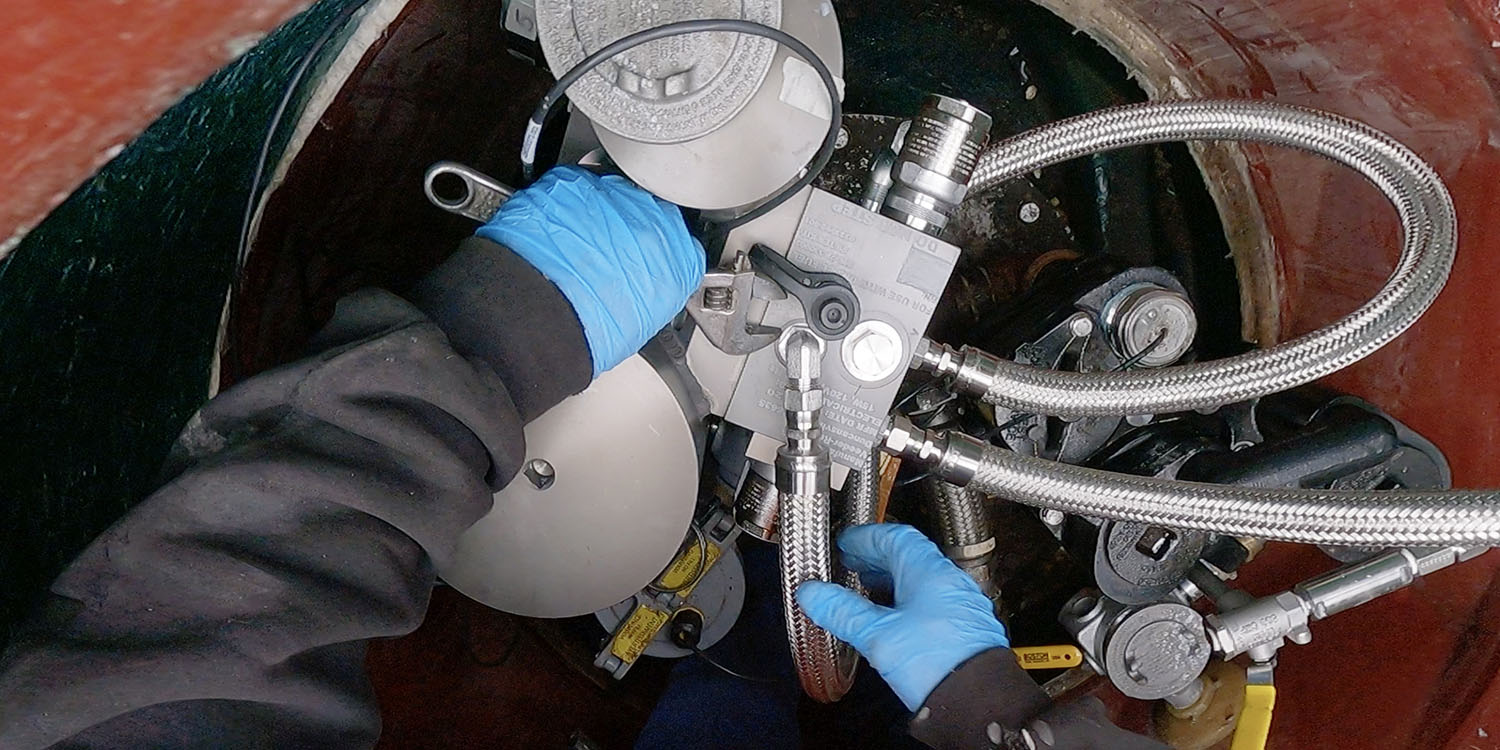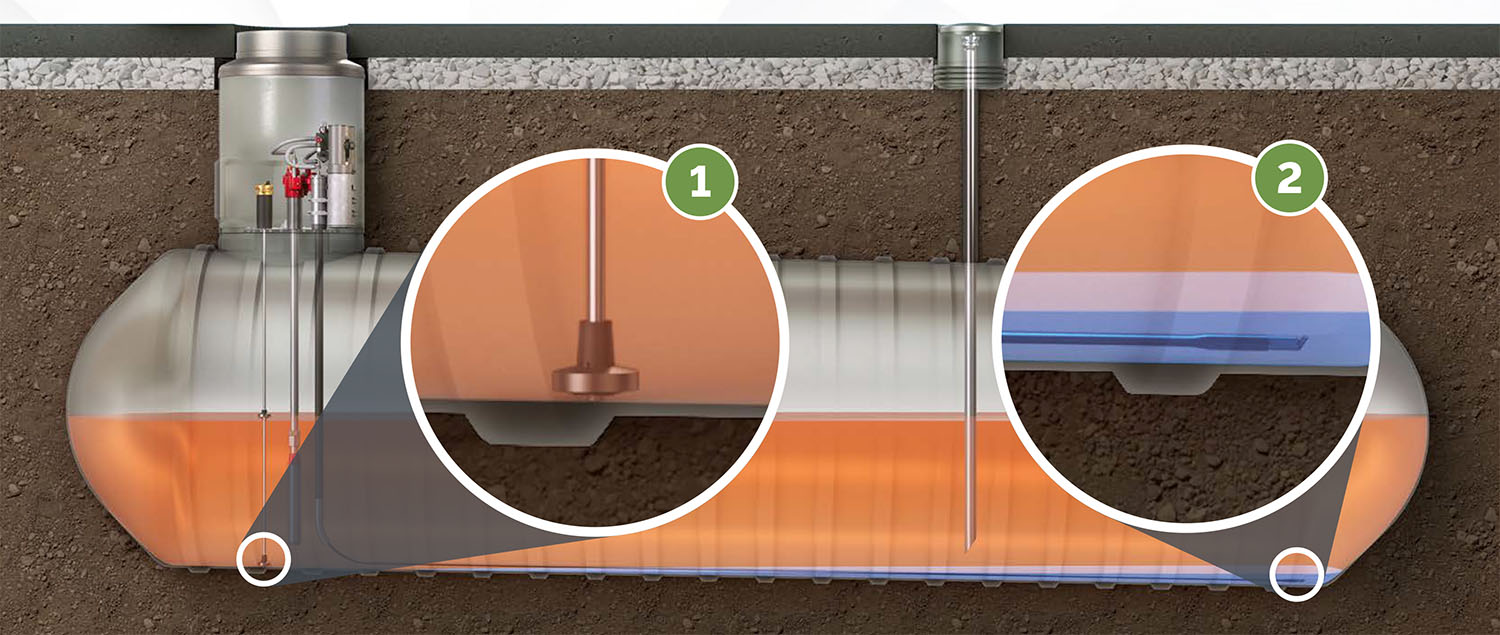Hidden Below the Surface
Of the three common components, water is the easiest to address but first you need know where it’s hiding.
Many underground storage tanks have magnetostrictive probes with separate water detection floats (1), but they require a minimum water level of ¾” in the probe area to go into alarm. This is great for identifying a catastrophic breech of the tanks integrity but less effective for identifying water that as slowly accumulated below that threshold over time.
Depending on the tilt of your tank there could be stagnate water at the lowest point of your tank (2) that could be a breeding ground for bacteria.
Identifying Water is Key
When microbial growth feeds on components of the fuel, biomass then settles in the water at the bottom of the tank and creates the acidic environment that leads to corrosion. The key to avoiding tank corrosion is identifying the water in the tank and removing it. Once water is removed, one of the common components of the equation is gone and the environment is no longer corrosive.
Learn more about fuel system corrosion, indicators of it, and its impact.

Read all our Combat Corrosion Articles
Water is integral to corrosive environments and a serious threat to diesel storage tanks and fuel equipment health. Learn more about the cause and impact of corrosion, and steps you can take to mitigate it.
Read More
